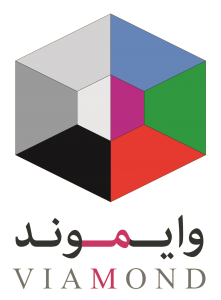Talks on bisexual safe space(s) and online bisexual spaces are restricted.
Abstract
Talks on bisexual safe space(s) and online bisexual spaces are restricted. This paper explores the potential of an on-line forum for bisexuals, their lovers, and individuals who are thinking about bisexuality to operate as an on-line space that is safe. To comprehend perhaps the forum that is analysed effective as being a bisexual safe area, as conceptualised by Jo Eadie, we concentrate on the techniques, as manifold of doings and sayings, that induce the forum and on the embodied experiences for the individuals. We conclude that oppressive regimes which are rooted in offline techniques, this is certainly, mononormative ideals, value, and orthodoxies, are over and over introduced by individuals within their tales, concerns, and replies. During the time that is same sharing experiences and empowerment are fundamental methods and possess a direct effect beyond the forum itself. Finally, by emphasizing thoughts, moods, and stops we could realize why individuals indulge in the techniques that constitute the forum.
Introduction
Understandings of bisexual (safe) areas and online bisexual areas are cammodels limited by lots of studies. Examples are studies about lesbian/bisexual experiences on MySpace (Crowley 2010 ), content analysis of bisexuals’ blogs and private adds (George 2001, 2011a ), an essay showing from the impact associated with the internet on bisexual females (George 2011b ), and lots of studies on online sexual activities of bisexuals ( e.g. Daneback et al. 2009 ). Unfortuitously, studies to the need for internet for bisexuals who will be in the act of checking out their sexual preferences and identity/identities miss.
Currently in 1993, Eadie argued that bisexual safe areas are necessary for three, interlinked, reasons. First, bisexuals require an area, or numerous areas, clear of oppressive regimes and social teams, or in other words, areas which are clear of monosexual some ideas, normativities and orthodoxies. I am aware that the main oppressive regime is mononormativity, the institutionalisation of monosexuality. 2nd, bisexual spaces that are safe needed seriously to offer room for sharing experiences and environment agendas for bisexual activism. Empowerment of bisexuals and community building are a couple of elements within Eadie’s demand bisexual spaces that are safe. Third, Eadie defines bisexual spaces which can be safe areas free from worries and anxiety due to users of oppressive teams. The decision for bisexual safe areas continues to be present, perhaps perhaps not when you look at the place that is last the disadvantaged social, real, and psychological state of bisexuals when compared with heterosexuals, homosexual guys, and lesbian females as determined in Dutch research ( ag e.g. Felten & Maliepaard 2015 ) and Anglo United states research (Browne & Lim 2008 ; san francisco bay area Human Rights Committee 2011 ; Barker et al. 2012a ). As an example, Monro ( 2015 ) makes use of comparable terms to explain a socio political room to get refuge from heterosexism and mononormativity, to get in touch with other people, also to explore identification dilemmas. The image of bisexual safe areas drawn by Eadie resembles much work with homosexual, lesbian, and queer areas (see Oswin 2008 ; Maliepaard 2015a for substantial talks on queer area). Work with queer area celebrates queer areas as areas that are less influenced by heteronormative norms, values, and orthodoxies and offer symbolic and power that is political non heterosexuals (see e.g. Myslik 1996 ; Brown 2000 ). However, focus on bisexual areas and geographies lack within modern geographies of sexualities (Bell 1995 ; Hemmings 1997, 2002 ; McLean 2003 ; Brown et al. 2007 ; Maliepaard 2015a, 2015b). Empirically, Hemmings ( 1997 ) determined that bisexual areas usually do not occur aside from some conference that is bisexual and organizations. Perhaps we are able to include parties that are bisexual well (Voss et al. 2014 ). Because there is much to criticise from the work of, by way of example, Hemmings and Eadie (see Maliepaard 2015a, 2015b), the thought of bisexual safe areas is nevertheless underexplored particularly in reference to the Web and on the web activities. I shall shed light from the potential regarding the online to work being a space that is safe or perhaps a manifold of safe areas, but additionally its limits when it comes to bisexual participants.

دیدگاه خود را ثبت کنید